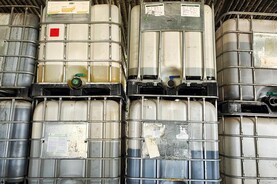Bumblebees, solitary bees, hoverflies and butterflies are to be monitored on farmland, semi-natural and public land under a new pilot initiative.
Minister of State at the Department of Agriculture Pippa Hackett and Minister of State at the Department of Heritage Malcolm Noonan said the scheme will track changes in wild pollinators across Ireland and is part of an initiative across much of Europe.
Wild pollinators will be monitored across a network of 50 sites and the pilot will be built into the national pollinator monitoring scheme.
Minister Hackett said it will support the all-Ireland pollinator plan and proposed EU pollinator monitoring requirements by establishing a robust national monitoring framework.
Key metrics
“This will deliver key metrics on pollinator population status and trends, and complement the long-term citizen science monitoring that is already being done through the all-Ireland bumblebee monitoring scheme,” she said.
Minister Noonan said the national pollinator monitoring scheme will build on the existing programmes of the National Biodiversity Data Centre.
“We have seen great strides in caring for pollinators in towns and villages, parks and gardens, and I hope we will see the same in the farming landscapes of Ireland in the years to come.”
Monitoring is an essential first step
Director of the National Biodiversity Data Centre Dr Liam Lysaght noted that: “Monitoring biodiversity is an essential first step in the protection of pollination and other ecosystem services. For polices or actions to be effective, they must have a sound evidence base.”
The all-Ireland pollinator plan 2021-2025 is supported by both the Department of Agriculture, Food and the Marine and the National Parks and Wildlife Service.
It identifies a clear need for long-term monitoring mechanisms for wild pollinators, so that the impact of the plan can be properly assessed.
The EU pollinators initiative (2018) calls on member states to develop national pollinator strategies and establish monitoring mechanisms, with indicators to enable evaluation of actions taken to tackle the decline of pollinators.






 This is a subscriber-only article
This is a subscriber-only article










SHARING OPTIONS: